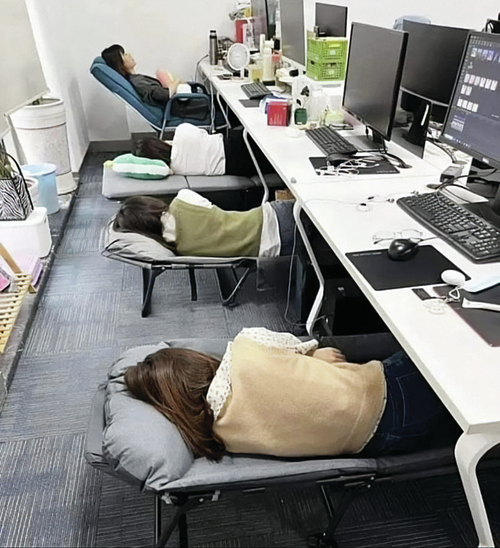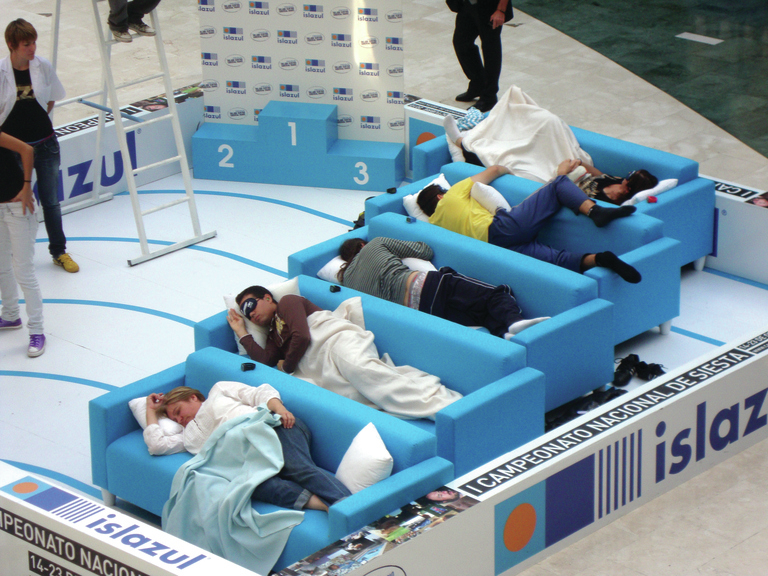
Sleep Revived: Apparently, those who snooze win – new research suggests habitual napping enlarges the brain
Debate about the benefits of power napping has raged for years, but recent research suggests those who enjoy a daytime snooze can nod off knowing it is likely doing some good. A study conducted by UCL in the UK and the University of the Republic in Uruguay found regular catnaps can increase the size of the brain and perhaps thereby delay the ageing process.
Published in June in Sleep Health, the journal of the UK’s National Sleep Foundation, the research project considered whether there was an association between daytime napping, cognitive function and brain volume, as had been suggested by previous purely observational studies. In welcome news for nappers, its conclusions indicated a causal link between habitual power naps and larger total brain volume.

The results of this randomisation study have deepened our understanding of daytime nap frequency, cognitive function and structural brain outcomes. Yet they also highlight the need for further research. Brain areas that determine factors such as alertness may also be affected by napping. Exploring whether there is any association between catnaps and other measures of brain health and cognitive function like hippocampal volume, reaction time and visual processing is the next task for scientists.
Bigger brains
The joint university research project used data from people aged 40 to 69 and involved a gene variation measurement technique called Mendelian randomisation. Previous studies have identified 97 snippets of DNA – the genetic code with which we are born – concerned with people’s likelihood of habitual napping. Genetic data and magnetic resonance imaging (MRI) scans drawn from more than 35,000 individuals taking part in a larger UK Biobank study were then used to compare measures of brain health and cognition of people who were genetically programmed to nap against those who were not programmed this way. Analysis suggested a larger total brain volume for those who were programmed to nap.

In an indication that regular nappers are less prone to brain shrinkage, the study found that their brains were about 15 cubic centimetres larger – the equivalent of delaying ageing in the brain by between 2.6 and 6.5 years. With good brain health comes a lower risk of dementia and other diseases.
UCL researcher Dr Victoria Garfield said their “exciting findings” suggest that everybody could potentially benefit from napping. She also pointed out that this health benefit is relatively easy to try out compared to other forms of activity often recommended to improve well-being, such as vigorous exercise. She hoped the study would reduce any stigma about taking an afternoon nap.
Napping culture
The concept of catnaps during the workday is more culturally acceptable in some parts of the world than others. Spain, for instance, has long embraced the tradition of a siesta. This is especially true in the smaller, rural communities of Andalucía and other regions where many people still eat at home and then retire for a nap in the searing afternoon heat. However, the traditional siesta is now much less common in the larger cities. Here, a regular 9 a.m.-5 p.m. routine tends to be followed, and napping is not really part of the modern career culture.

Hong Kong and China also have a napping culture. In some shops and offices, workers set up a sleeping pillow and snooze for 15 minutes or half an hour. An ex-pat British businessman who preferred not to be named said he once thought there was a power cut at a factory in China as the lights went out suddenly after lunch had been served. “Oh, no, we turn the lights out so the workers can have their nap,” he was politely informed by the foreman.
Sleeping is a fundamental component of health. An assistant professor in the Behavioural Science Group at Warwick University, Dr Mattie Toma, says that companies in the UK should consider giving their staff the chance to nap. Her own research has found that workers in India who snoozed in the afternoon were more productive, and the habit boosted levels of attention and well-being.
Past snoozers
Indeed, two of the UK’s former prime ministers were famous nappers – Winston Churchill and Margaret Thatcher. During the Second World War, Churchill would often take a 20-minute nap in the afternoon, his “refreshment of blessed oblivion” so vital to renew his vigour. Thatcher reportedly only slept for four or five hours at night but made up for it with catnaps in the back of her official car. American presidents John F. Kennedy, Ronald Reagan and Bill Clinton were all known to enjoy 40 winks, though Reagan would not readily admit that he took said snoozes.

This latest research should erode any remaining stigma surrounding catnaps. Even Einstein was thought to have a power nap, and many well-being experts including British workplace stress-management guru Carole Spiers suggest that a short nap of 15 to 20 minutes is sufficient to reenergise you. According to some studies, though, having a nap too late in the afternoon may disturb your nighttime rest, so laying down tools and your head before 3 p.m. is probably ideal.
Also Read: The Science of Sleep Chronotypes: Unveiling the Secrets of Our Internal Clocks







